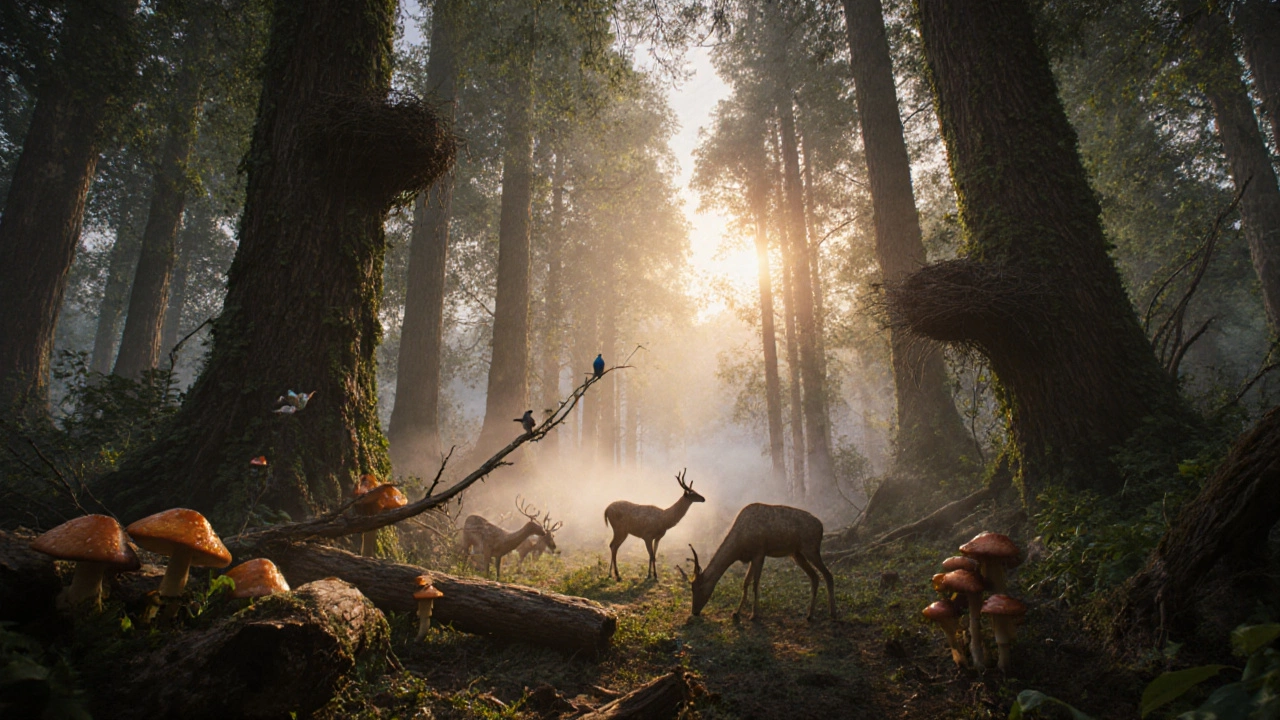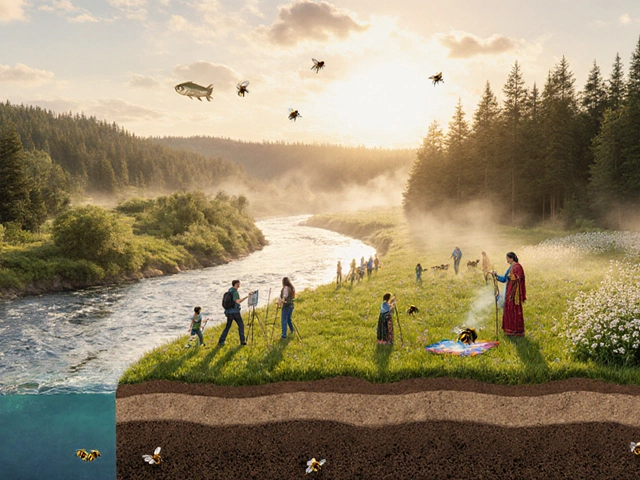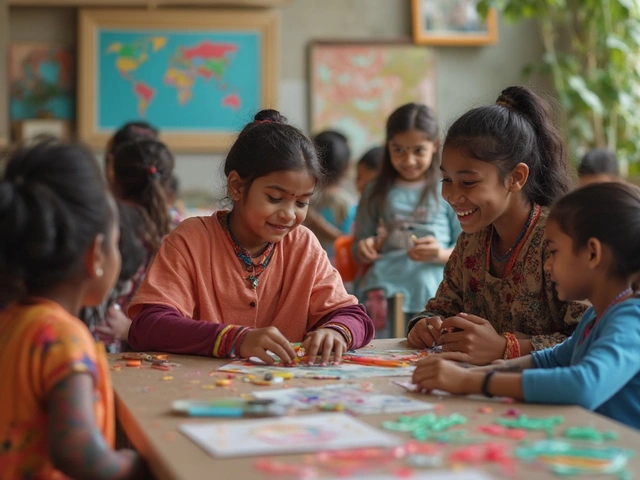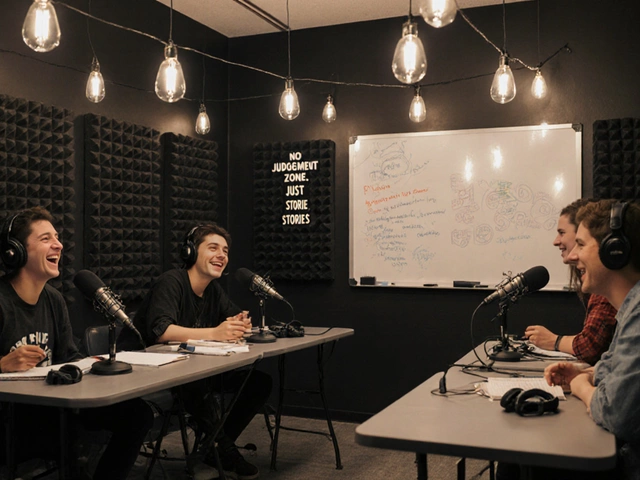Think about the world around you-the trees, the air, the rocks, the birds, the water in the creek. Now ask yourself: what makes something part of the environment? Not everything is the same. In fact, everything in nature falls into just two basic groups. These groups aren’t just labels; they’re the foundation of how life works on Earth.
The Living World: Biotic Factors
The first group is made up of everything that’s alive. Scientists call these biotic factors. That includes plants, animals, fungi, bacteria, and even the tiniest microbes you can’t see with your eyes. These are the things that grow, eat, breathe, reproduce, and die. They interact with each other in ways that keep ecosystems running.
Take a forest, for example. Trees absorb sunlight and turn it into food. Deer eat the leaves. Mushrooms break down fallen logs. Birds nest in the branches. Each one depends on the others. If you remove one-say, the wolves that keep deer numbers in check-the whole system changes. Too many deer eat all the young trees. The forest shrinks. That’s biotic life in motion.
Biotic factors aren’t just big or obvious. A single gram of soil can hold over a billion bacteria. These tiny organisms decompose dead matter, recycle nutrients, and feed plants. Without them, nothing alive could survive. You’re part of this group too. Every breath you take, every bite you eat, connects you to this living web.
The Nonliving World: Abiotic Factors
The second group is everything that’s not alive. These are called abiotic factors. They include sunlight, water, air, soil, temperature, rocks, and even pollution. These elements don’t grow or move on their own, but they shape everything that does.
Imagine a desert. The sand, the intense heat, the lack of rain-these are all abiotic. They determine whether a cactus can live there, or if only a few hardy insects survive. In the ocean, water salinity and temperature control where fish can spawn. In a city park, the type of soil affects what grass will grow, and how much shade the trees can provide.
Abiotic factors set the rules. They decide how much life can exist in a place. Too cold? No plants grow. Too dry? Animals leave. Too polluted? Fish die. These factors don’t care about biology-they just are. But their changes can cause massive shifts in living communities.
How They Work Together
Biotic and abiotic factors don’t just exist side by side. They’re locked in a constant dance. Plants (biotic) need sunlight, water, and carbon dioxide (abiotic) to grow. In return, they release oxygen (abiotic) that animals need to breathe. Animals (biotic) produce waste that becomes fertilizer (abiotic) for plants. When a tree dies, fungi break it down, returning nutrients to the soil.
This connection is why ecosystems are so fragile. When humans pump carbon dioxide into the air (changing an abiotic factor), it traps heat. That warms the planet (another abiotic change), which melts ice, raises sea levels, and forces animals to move or die (biotic impacts). One small shift in the nonliving world can ripple through the living one.
Even something as simple as road salt used in winter affects the soil and water nearby. That change kills plants, reduces insect populations, and pushes birds away. It’s not about intention-it’s about cause and effect. The living and nonliving are tied together in ways most people never notice.
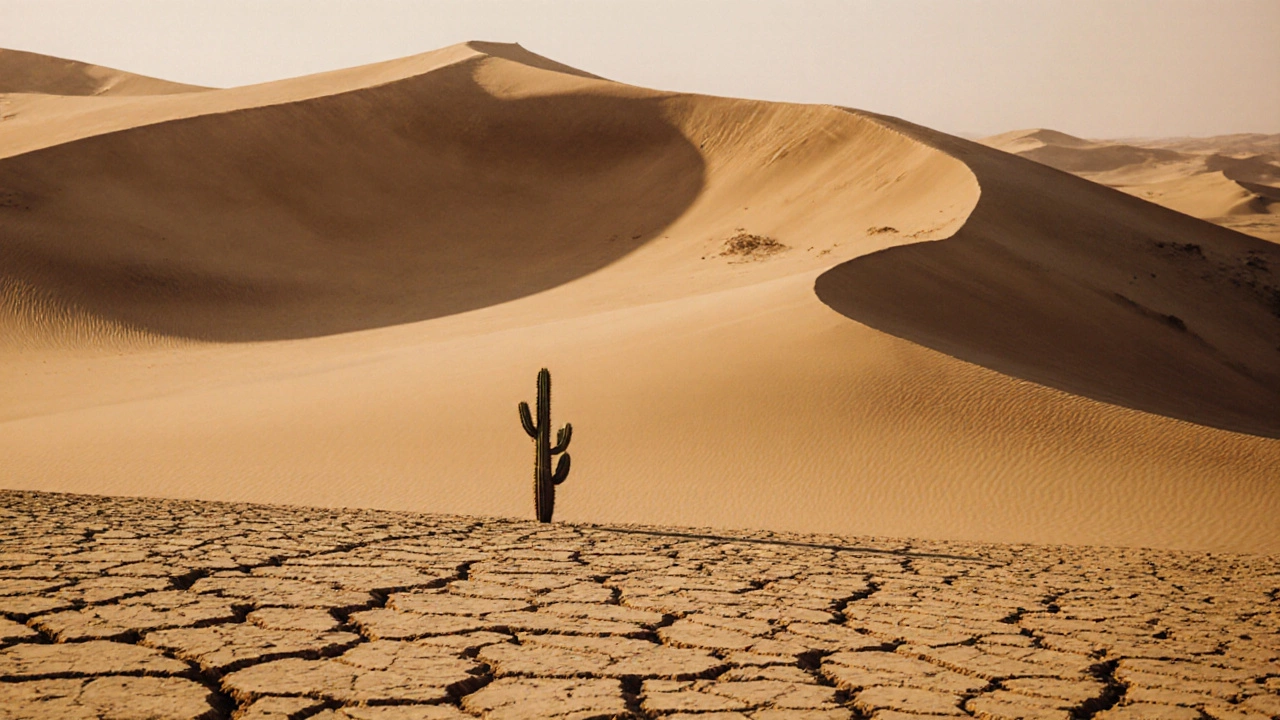
Why This Matters in Everyday Life
You don’t need to be a scientist to see this in action. When you plant a garden, you’re choosing what to grow based on your soil type (abiotic), how much sun your yard gets (abiotic), and what plants will thrive there (biotic). When you recycle, you’re helping reduce landfill waste that changes the chemical makeup of soil and water (abiotic), which protects insects and worms (biotic).
Even your choice of transportation matters. Cars burn fuel, releasing heat-trapping gases into the air (abiotic). That leads to hotter summers, which stress plants and animals (biotic). The connection is real, immediate, and personal.
Understanding these two groups helps you make smarter choices. Buying local food reduces the distance it travels, lowering emissions (abiotic impact). Choosing reusable bags reduces plastic in oceans, which protects sea life (biotic). These aren’t just good habits-they’re responses to how the environment actually works.
Common Misconceptions
Some people think “natural” means only living things. But a mountain isn’t alive-it’s abiotic. A river isn’t alive-it’s abiotic. Yet both are essential parts of the environment. Others assume that if something is man-made, it’s not part of nature. But plastic in the ocean? That’s now a major abiotic factor affecting marine life. Human-made items become part of the environment once they’re released into it.
Another mistake is thinking abiotic factors are harmless. Clean air and fresh water are life-giving. But polluted air and acidic rain? Those are abiotic forces that kill trees, poison fish, and make soil barren. It’s not the object-it’s the condition.
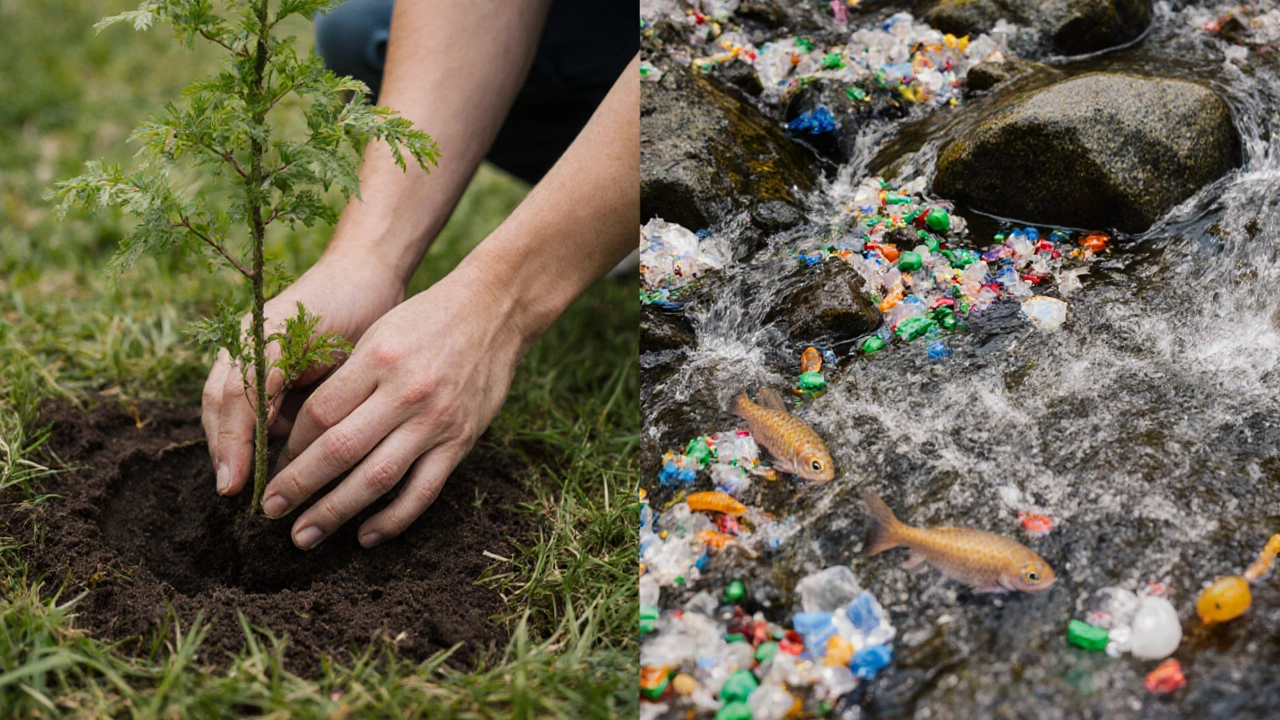
Real-World Examples
Look at coral reefs. They’re built by tiny living animals (biotic), but they only survive in warm, clear, salty water (abiotic). When ocean temperatures rise just 1-2°C, the coral bleaches and dies. That’s an abiotic change destroying a biotic system.
Or consider bees. Their populations are crashing because of pesticides (abiotic chemicals in the soil and air) and loss of wildflowers (biotic loss). Both problems come from human actions that altered the balance between living and nonliving elements.
Even your backyard bird feeder is part of this system. The seed you put out (biotic) attracts birds, but if the feeder isn’t cleaned, mold grows (biotic) and the metal parts rust (abiotic). Both affect which birds come back-and how many survive.
What You Can Do
You don’t need to fix the whole planet. Start by noticing the two groups around you.
- When you walk outside, ask: What’s alive here? What’s not?
- When you see litter, think: How does this nonliving thing affect living things?
- When you water your plants, consider: Is this water clean? Is the soil healthy?
Small actions add up. Plant native species-they’re adapted to local abiotic conditions. Reduce plastic use-it breaks down into microplastics that enter the food chain. Support clean energy-it reduces the abiotic pollution that harms biotic life.
The environment isn’t just ‘nature.’ It’s the full system-living and nonliving-working together. Once you see the two groups clearly, you start seeing the connections everywhere. And that’s the first step toward protecting them.
What are the two main groups in the environment?
The two main groups are biotic factors (living things like plants, animals, and microbes) and abiotic factors (nonliving things like sunlight, water, air, soil, and temperature). Everything in nature belongs to one of these two categories.
Is water a biotic or abiotic factor?
Water is an abiotic factor. Even though it’s essential for life, water itself is not alive. It doesn’t grow, reproduce, or respond to stimuli. But it directly affects which living things can survive in a place.
Can humans be considered part of the biotic group?
Yes. Humans are living organisms, so we are part of the biotic group. We grow, breathe, reproduce, and interact with other living things. Our actions also change abiotic factors like air quality and soil composition, which in turn affect other living organisms.
Do abiotic factors change over time?
Yes. Abiotic factors like temperature, rainfall, and pollution levels change naturally and because of human activity. For example, global warming is raising average temperatures, and industrial runoff is changing water chemistry. These changes force living things to adapt, move, or die.
Why do scientists separate living and nonliving things?
Scientists separate them to understand how ecosystems function. Living things interact with each other and depend on nonliving resources. By studying these two groups separately-and how they connect-researchers can predict how changes in one will affect the other. This helps in conservation, farming, and pollution control.
